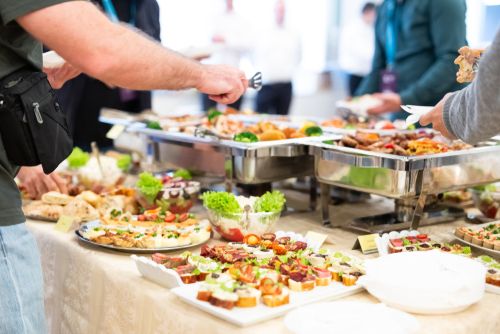 When loved ones pass, we usually honor their lives with funerals. For many people, a funeral involves a service preceded by a wake or viewing of the body and is often (but not always) followed by the burial. Depending on the circumstances, the deceased may be honored by a memorial service that doesn’t include the body. In many cultures, a funeral also includes a repast or reception where mourners gather over a meal. Here’s what you should know about food for a funeral.
When loved ones pass, we usually honor their lives with funerals. For many people, a funeral involves a service preceded by a wake or viewing of the body and is often (but not always) followed by the burial. Depending on the circumstances, the deceased may be honored by a memorial service that doesn’t include the body. In many cultures, a funeral also includes a repast or reception where mourners gather over a meal. Here’s what you should know about food for a funeral.
Picking a Place
One of the first things to decide is where you’ll have the reception or repast. It’s quite common for the meal to be hosted by the family or friends of the deceased at someone’s house. Being surrounded by people you know in a familiar place like a home can be especially comforting. A house of worship, especially one with an available kitchen and dining area is a good venue. Some funeral homes also offer banquet halls that may be included in a package deal. The location of the repast will often inform other details.
Counting Attendees
The number of attendees is another important consideration for a funeral reception. Are you expecting a large crowd or a few close loved ones for post-funeral fellowship? You’ll want a venue that can accommodate those expected to attend in a particular frame. Some funeral planners opt for a home repast because mourners may come and go for several hours after a service. Public venues often have time limits. The number of guests will also give you a better idea as to the type of meal. A buffet-type service is recommended for larger crowds in a shorter time period, whereas a grazing table of finger foods may better accommodate visitors coming and going.
Choosing a Menu
When you have a sense of where to host a meal and how many people are coming, you can also think about a menu. You’re not only deciding what to serve but how to serve it. Are you providing light bites or a full meal? Will the menu be inspired by the deceased in some way? Did that person have a favorite dish or cuisine? Some religious traditions dictate that certain foods be consumed or forbidden as part of a ceremony. Who will be preparing the food? These are all questions that need answers. Consider the following options:
- Potluck: If the guests are friends and family, a potluck takes a lot of the burden and cost from the person arranging the funeral. In a classic potluck, the “luck” comes from hoping that participants don’t all bring the same dish. You can take out some of the guesswork by discussing the menu beforehand. Another option is to provide the main entree and have guests bring side dishes or desserts.
- Catered food: If the budget allows, consider having the repast meal provided by a local restaurant or caterer. This gives you several options for the menu and food service, but you’ll need to think carefully about where the meal will be held. Some caterers have special requirements for food preparation. A funeral home may be able to connect you to local caterers that have provided receptions or repasts.
- Other: Some houses of worship offer food as part of a ministry for the bereaved. This may be included in a funeral services package or done with a separate cost or suggested donation.
Even if you like cooking and hosting events otherwise, preparing a repast meal for a funeral can be physically and emotionally taxing, especially if you’re grieving.
When it comes to funerals, food is important, especially if you’re planning a repast or food reception. It’s important to plan based on the venue, the number of attendees, and who’s providing the menu. Be sure to consider the deceased’s preferences as well as religious requirements and budgetary concerns.